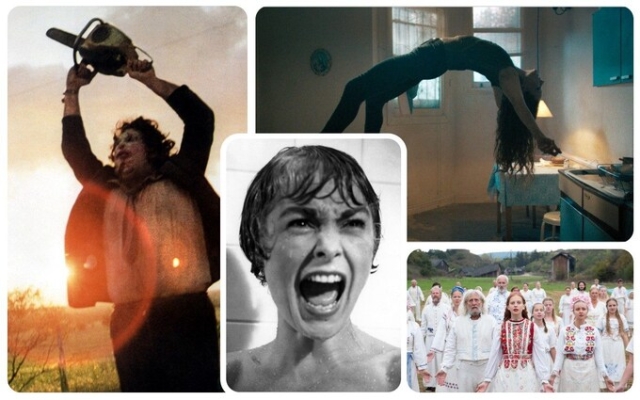 Horrible: The Texas Chainsaw Massacre, Psycho, Saint Maud and Midsommar
Horrible: The Texas Chainsaw Massacre, Psycho, Saint Maud and Midsommar
Did 50 squats this morning? Have you swum in cold water? No — then don't worry. There's a much less physically taxing way to improve your health this Halloween.
It has long been known that watching horror films can provide a host of benefits, from relieving stress, increasing pain tolerance, and releasing endorphins and oxytocin, the “love hormone.”
And, of course, watching horror films and getting really scared is a very enjoyable way to spend an evening. (Turning off the lights also has the added bonus of making you less visible to trick-or-treaters.)
So what should you watch? The Telegraph film team has ventured into the vaults to bring you 80 of the best horror films ever made, presented in chronological order. But if you'd rather get straight to the point, scroll to the end to find the 10 scariest movies of all time.
The Best Horror Movies of All TimeThe Fall of the House of Usher (1928)
This early Poe adaptation is rife with supernatural lyricism that manages to suggest , that all is not right at the Usher residence, using shaky long takes and wondrous photographic effects. A wordless session full of surprises.
The Night of the Hunter (1955)
There's nothing more frightening in cinema than the sight of deranged serial killer Robert Mitchum coming into view, love and hate fighting each other. fight for championship in finger tattoos.
Charles Laughton's only film as a director was heavily criticized upon its release; It's now an acclaimed masterpiece, its vibrant cinematography and truly creepy themes utterly compelling. The scene where the children swim away from Mitchum down the river is deservedly famous; his furious howl as they flee is almost as terrifying as the hymns he sings as he relentlessly hunts them down.
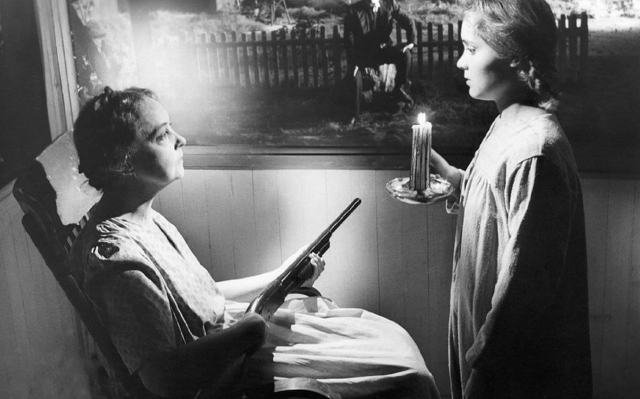 Night of the Hunter. Photo: Pictorial Press Ltd/Alamy Les Diaboliques (1955).
Night of the Hunter. Photo: Pictorial Press Ltd/Alamy Les Diaboliques (1955).
A resentful wife and her friend conspire to kill her terrible husband — but why, when the pool they dumped the body in drains, is there no trace of him left? Still one of the most gripping and engrossing horror mysteries of all time, completely undated, Henri-Georges Clouzot makes clever and menacing use of a dark school in which events spiral.
Night of the Demon (1957).
Mr James's The Extraction of the Runes had a deliciously sinister story — a curse is passed from body to body, often through trickery — and Jacques Tourneur created around it a British occult aspic whose sly wit and aura of fear are second to none.
p >Throne of Blood (1957)
An honorable horror film because Kurosawa places a sharp, chilling emphasis on the supernatural elements of Macbeth—the title says it all. We're dealing with regicide, spiritual prophecies, severed heads. Fate falls into place with inexorable certainty.
Dracula (1958)
There have been countless imitations, but no one can put a blood-stained glove on Terence Fisher's adaptation of Bram Stoker's chilling novel. Christopher Lee plays the bloodthirsty Count with both terror and humor, and Peter Cushing provides solid support as Abraham Van Helsing. A classic that delights.
 Christopher Lee in Dracula Photo: Ronald Grant Archive Psycho (1960)
Christopher Lee in Dracula Photo: Ronald Grant Archive Psycho (1960)
Hitchcock greets us with a titillating story about petty theft, and then cuts up the screen with a devastating attack on convention. An entire genre was born here, but few of its directors know how to keep twisting the knife with such rebellious enthusiasm.
The Innocents (1961)
Prestige horror: pure distillation of Henry James's The Turn of the Screw into disturbingly ambiguous cinema. Deborah Kerr is perfect as the depressed nanny who may or may not project her fears onto her charges.
The Pit and the Pendulum (1961)
The torture chamber of a mentally unstable 16th-century Spanish noble is a place rife with horror potential, and this loose adaptation of Edgar Allen Poe's story doesn't pull any punches. His harrowing performance opposite horror king Vincent Price as nobleman Nicholas Medina is made all the more terrifying by Les Baxter's screeching, haunting score. The pendulum of the title is a giant swinging blade kept in the torture chamber in which Medina believes his wife (Barbara Steele) was accidentally buried alive.
Carnival of Souls (1962)
Fabulous terror on a tiny budget from the derelict Herc Harvey, whose masterstroke transformed an abandoned Mormon amusement park in Saltair, Utah, into a place between life and death. This place has so many of its own ghosts.
The Masque of the Red Death (1963)
A delectable set of ingredients—not one, but two short stories by Edgar Allan Poe, and a characteristically committed, impressively commanding performance from Vincent Price—combine to create an unforgettable effect in this 1963 Roger Corman horror film, one of several Poe adaptations the prolific director worked on. .
More overtly arthouse in its sensibility than some of Corman's other films, the film is set during a medieval plague (the «Red Death») and at times has an almost dreamlike feel, while the hallucinogenic sequences add to the semi-magical, unsettling overall effect. The grand finale, in which Price's evil, Satan-worshipping prince Prospero comes face to face with his disguised destiny at a ball, is a masterpiece of tension and intense spectacle.
 Birds (1963)
Birds (1963)
In his adaptation of Daphne du Maurier's story, Alfred Hitchcock manages to make what we usually associate with harmless beauty downright terrifying. As you'd expect from the master of suspense, it's all about tension. It builds and builds and builds with a painful crescendo.
Ghosts (1963)
With this film and The Sound of Music, Robert Wise proved that no director has ever used sound to more terrifying effect. A group of psychics, scientists and skeptics spend several days in a haunted house, their nerves torn by footsteps in the hallway that could put you off your country hotel forever.
Repulsion (1965)
The bloodiest thing in a Roman Polanski film is it's a rabbit with its skin intact that decomposes when the film's protagonist Carole Ledoux (Catherine Deneuve) descends into madness. There is little bloodshed in Carol's Kensington flat, but the tension is always high.
The Devil Is Out (1967)
For 20 years, Hammer Studios were prodigious purveyors of Grand Guignol horror: heaving-chested vampires, swaying mummies and even a pouting gorgon were realized in vibrant Technicolor. This film, based on the novel by Dennis Wheatley, was one of the best, and it is chilling in its genteel Home Counties setting where a group of Satanists, under the watchful eye of Charles Gray's lip-smacking camp, spiral out of control. Christopher Lee finds himself on the side of the good this time around as the Duke de Richelieu, who encases his friends in a pentagram to save them from the forces of evil in a crazy finale.
Rosemary's Baby (1968)
Ira Levy's gritty tale of Manhattan witchcraft receives a sensational screen treatment by then-wunderkind Roman Polanski, who orchestrates the entire conspiracy against Rosemary (Mia Farrow) with brilliant technique. Such disgusting fun. Do not watch during pregnancy.
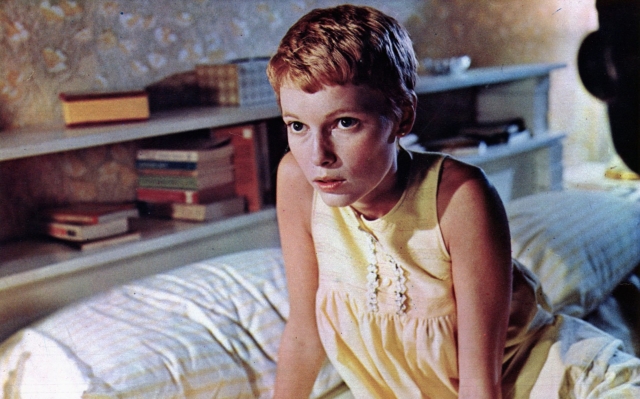 Mia Farrow in Rosemary's Baby Credits: Ronald Grant Archives The Abominable Dr. Phibes (1971)
Mia Farrow in Rosemary's Baby Credits: Ronald Grant Archives The Abominable Dr. Phibes (1971)
Robert Fuest's gloriously demented The Abominable Dr. Phibes stars horror maestro Vincent Price as a scientist and biblical scholar who swears revenge after his beloved wife dies on the operating table and proceeds to murder the medical team he believes is responsible for her. demise, drawing inspiration from the ten plagues that struck Egypt in the Old Testament. Seventh, eat your heart out: here's how to write a biblically inspired serial killer story with style. Note the beautiful Art Deco set and a particularly inventive locust-themed kill.
The Exorcist (1973)
More than 40 years later, William Friedkin's religiously charged panic has lost none of its uncomfortable and transgressive edge. Boundaries are crossed and our expectations are repeatedly challenged as the body, mind and vocal cords of a 12-year-old girl — Regan MacNeil, played by the phenomenal Linda Blair — become the battleground for an age-old competition. Much of the film's power comes from its earnest earnestness and the way it fully embraces its own beliefs. Here, hell, demons and demonic possession are tangible, menacing things, as real and as visceral as our own skin and flesh, or even like a projectile of green vomit.
The Wicker Man (1973)
“Try everything once except incest and folk dancing,” said conductor Sir Thomas Beecham. If he had lived to see The Wicker Man, it would have supported him on at least one of these points. What a strange and unusual film it still is: name another Scottish island folk horror musical with such instant recognition.
Christopher Lee's impeccably polite performance as the pagan leader Lord Summerisle, who patiently explains to Howie the very trap into which he is being lured, holds up superbly, as does Woodward's sanctimonious version of Christian martyrdom. Essentially, they play Dionysus, the god of ritual madness, and Pentheus, the stifling voice of repression, in the only reimagining of Euripides' The Bacchae, which also features Britt Ekland swaying naked.
There are moments that are still arouse interest. trembles—the cornily disgusting Green Man Pub sign, the vanished photograph of last year's harvest festival on the wall—and the famous climax retains every bit of its unrivaled infernal power.
The Texas Chainsaw Massacre (1973)
Despite the many imitators, sequels, reboots, and homages that followed in its wake—and continue to proliferate to this day—there has never been a horror film quite like The Texas Chainsaw Massacre. This will probably never happen again.
Tobe Hooper's wild, sun-drenched slices of pure nastiness are still remarkable for their raw power; for a primitive, hypnotic wildness that will likely never be duplicated. The cast and crew went through hell to make it, suffering from raw meat, various animal carcasses and bones, and bloody and unwashed costumes — and the results give the finished project an authenticity that many more polished horror films lack.
< p>The story itself is simple: five young men encounter a family of cannibals deep in the Texas countryside, and all but one of the group meet a gruesome end. But the sounds and images — Gunnar Hansen's Leatherface swinging a chainsaw in desperate rage; Marilyn Burns' cathartic scream can't be erased.
Jaws (1975)
“I was about 10 when I saw Jaws, and it was the most intense movie theater experience I've ever been to,” our writer recalls Martin Chilton. . “On the big screen (and for a child, the Odeon Leicester Square was a big screen) and with the chilling bass music of John Williams, the Steven Spielberg film was truly frightening.
“This was a time before online spoilers and #shark tweets. No one knew what would happen in the film, and the atmosphere during the evening screening was electric. When the dismembered head rolled out of the hole in the boat, the entire theater jumped. Sighs and screams were heard in the hall. “Jaws” stayed with me with its clever tagline: “Don’t go in the water.” Even now, even in a tranquil seaside resort like Lyme Regis, I still scan the horizon for suspicious fins.»
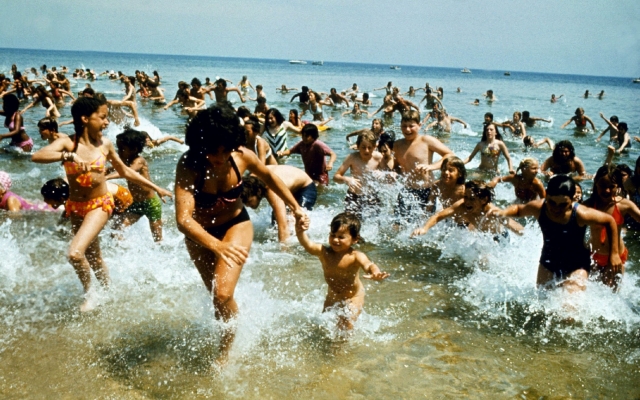 Author: Alami Carrie (1976)
Author: Alami Carrie (1976)
The humiliation and orgiastic revenge of a high school loser are exceptional channels for empathy in the hands of Brian De Palma. the real horror every time is that Sissy Spacek's telekinetic teen doesn't get what she wants. Surprisingly tense and funny.
The Omen (1976)
It may tone down the horror a bit, but it's the most enjoyable way to watch Richard Donner's The Omen, which depicts the inexorable rise of the devil. -child Damien, means simply accepting that the forces of evil are irresistible, and relaxing and enjoying the ride.
The film follows a couple who begin to suspect that their adopted son (the father was persuaded into a secret exchange after the death of their own newborn) is not human at all. There are unforgettable deaths, chilling animal encounters, a haunting suicide, a devastating cemetery discovery — and, all the while, the grim inevitability of young Damien's rise. Gregory Peck is in excellent form as the increasingly anxious father, and young Harvey Spencer Stevens is monstrously attractive as his satanic adopted son.
The Lodger (1976)
Is the main character of Roman Polanski's film The Tenant simply insane? Or are his gloomy elderly neighbors really plotting to kill him? This terribly claustrophobic film, in which the director himself plays a timid office worker renting an apartment whose previous employee committed suicide, is actually a meditation on fear itself, whether real or imagined, and all the more threatening to it.
Eraserhead (1976)
“I wouldn’t want to have a dream like that,” David Lynch’s mother said after watching her boy’s first feature film.
This wonderful, harrowing nightmare of a film, stunning set-piece creation and downright strange , rough atmosphere. , the post-industrial world inhabited by its reckless hero Henry (Jack Nance). It's done in beautiful black and white — in color these images would probably disgust us.
Hallowe'en (1978) 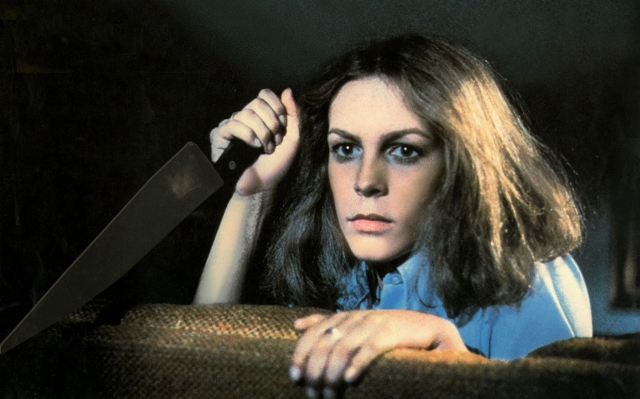 Jamie Lee Curtis on Halloween. Photo: Alamy
Jamie Lee Curtis on Halloween. Photo: Alamy
John Carpenter's low-budget slasher, endlessly imitated but never equaled, virtually invented the genre, making brilliant use of the widescreen format and Carpenter's own score to make you jump out of your seat — despite its reputation, the film is almost entirely gory . free.
Nosferatu (1979)
Murnau's silent take on the vampire myth is better known, but Werner Herzog's hypnotic remake turns it into Wagner. Klaus Kinski and Isabelle Adjani may be the genre's oddest couple among many, and the dark poetry of the filmmaking is electrifying.
The Shining (1980)
A madcap psycho-thriller that will conquer them all, Nicholson quickly has fun at a mountain resort and blames ghosts for her marital crisis. All of Kubrick's films are long corridors into the mind, and this is a terrifyingly literal reflection of his obsessions.
Friday the 13th (1980)
In Sean Cunningham's first visit to Camp Crystal Lake, still the definitive a slasher film about teenagers being slaughtered, a disgusting group of hormonal vacationers are ritually exterminated by masked mama's boy Jason Vorhees (or is it?) in increasingly gory fashion. In later installments, Jason met Freddy, went into space and even conquered Hell, but it was a killer debut.
An American Werewolf in London (1981)
Well, it's a wonderful night for a moondance — but it's not such a wonderful night for the victims of poor David, the film's lead American werewolf, who wreaks havoc on the titular British capital after an unfortunate encounter on the Yorkshire moors in this beloved 1981 film. . A true horror-comedy in which the horror and pathos are as poignant as the humor, John Landis's film is now rightfully considered a classic.
There are some brilliantly witty sequences, including one involving the roaring beasts of London Zoo, as well as a tense, deliciously disgusting sequence set in the London Underground (it's impossible not to think about this if you've ever found yourself alone in a tube station). Late night). But the film also stands out for the innovative, award-winning makeup work of Rick Baker, who helped bring David's transition to life in painful, stunning detail. The horror in this extended scene is twofold: we are horrified by the most astonishing skin-and-bone-stretching transformation, but we are also equally hypnotized by David's own violent fear and suffering.
Nightmare. on Elm Street (1984) 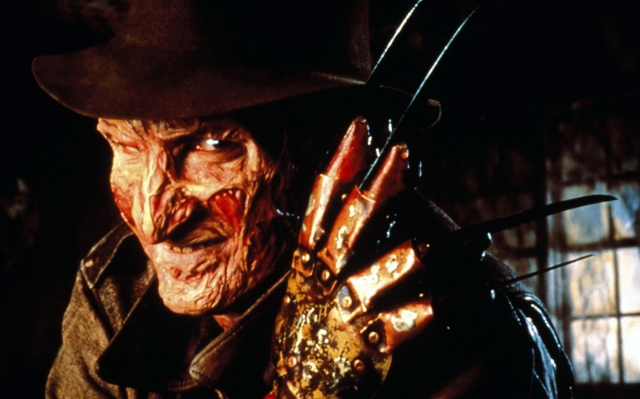 A Nightmare on Elm Street Photo: Allstar Picture Library
A Nightmare on Elm Street Photo: Allstar Picture Library
A good horror film brings fear and uncertainty into areas of our lives that we like to think of as safe and predictable. Thus, the setting of A Nightmare on Elm Street—an affluent suburb in picket fenced Ohio—was one of the reasons why this typical slasher film scared any boy whose middle-class life was going so pleasantly at the time.
< p>But it was the film's central premise—knife-handed villain Freddy Krueger's ability to kill his victims in their sleep—that truly disturbed our peace of mind. The message was clear: “Even when you are snug in your bed, in your comfortable home, in your quiet neighborhood, death and danger will find you.” This suggests a deep psychological desire for self-sabotage, which is, if anything, even more terrifying.
The Vanishing (1988)
This is a frank, deeply nightmarish story about a guy obsessed with finding out what happened to his girlfriend, who disappeared from a service station while they were on vacation. There is a rather twisted logic to the criminal's motives for what he did, and the ending never leaves you.
Candyman (1992)
Virginia Madsen does a powerful job as a student of folklore, a keen killer with a hook and framed for her crimes. Bernard Rose's majestic direction turns this into a stunningly epic and bloody fable.
Scream (1996)
The slasher film, Wes Craven's sly pastiche of the genre, manages to both figure out its rules and cleverly squeeze them out, using a psycho killer whose favorite icebreaker — “What's your favorite horror movie?”
Funny Games (1997)
Is Funny Games a horror film or simply a chastening commentary on film violence and how it degrades our understanding of reality? Either way, Michael Haneke's dark little fable, in which a family is terrorized by two menacingly polite strangers as the threat gradually escalates to unbearable levels, is a masterfully crafted, unforgettably disgusting film that is not to be missed.
To make sure Americans don't miss it (or forget), in 2007 the director even remade his 1997 German-language film, frame by frame, with English dialogue and a new, Hollywood-friendly cast. Both versions are excellent, if extremely unpleasant — with the latter attribute, of course, being the key point. Violence, according to Haneke, should never be enjoyable.
“The Others” (2001)
Compared to Alejandro Amenábar's The Sixth Sense, The Others is a smart, brilliantly atmospheric horror film that deserves to be celebrated in its own right — not least for its inspiration and assured setting. The play «Your Nerves Are Ringing» by Nicole Kidman, which is at its core.
A mother of two, her husband still missing in action in the war, Kidman Grace hides with her children, who suffer from severe allergies to light, in a secluded, dark house in the Channel Islands and soon begins to realize that her family is not alone. Yes, there's a big twist at the end — but it's the impressively claustrophobic sequence that makes it all worthwhile.
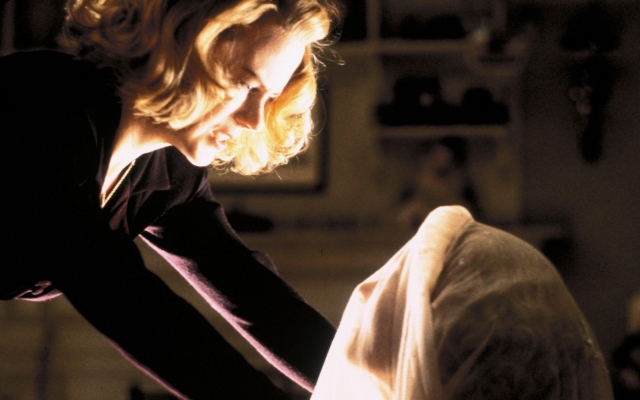 Other credits: Alamy Trouble Every Day (2001)
Other credits: Alamy Trouble Every Day (2001)
From the insidious Tindersticks soundtrack to the predatory, unsettling hotel scenes, everything in French director Claire Denis' deliciously dark cannibalistic love story will haunt you for days afterward. It may fall on the slower, sadder, arthouse end of the horror spectrum, but its evocative portrayal of addiction coupled with Béatrice Dalle's monstrous, erotically charged performance as the troubled cannibal Coré earns it a place in horror history. This is a movie with a bite—and, of course, a movie about bites and the subversive urge to be bitten. Desire has never been more dangerous and futile.
28 Days Later (2002)
Strictly speaking, 28 Days Later, often hailed as a revival of the zombie genre, isn't actually a zombie movie at all: its mindless antagonists are humans infected with a lab-created rage virus. At its core, however, this is a zombie movie: the suffering masses pitted against a few desperate survivors in a world where all conventional power structures have collapsed. But, crucially, his «zombies» are not the slow, shambling flesh-eating creatures of yore: instead, those infected can flee (gasp!), and the viral disease they pass on to their victims takes effect almost instantly.
However, the most memorable aspects of 28 Days Later are its compelling vision of a post-apocalyptic Britain (one early episode finds protagonist Cillian Murphy (Jim) wandering through an eerily desolate London) and its uncompromising attention to human nature. Like The Walking Dead, with which it has many similarities (coincidentally, since the first comics were apparently written before the film), it reminds us that fully aware people are often much more frightening than brain-dead infected ones. .
In my skin (2002)
In this bloody slice of New French extremism, Esther, a woman with a demanding job and an apparently happy relationship — an ideal situation, but one in which it can feel like your body is just a cog in the system; something that belongs to everyone but you — got a nasty cut on your leg at a party. Intrigued by the fact that she feels no pain at the time of the incident, the young professional (played by the film's director Marina de Van) becomes obsessed with her injury and, as a result, with her body itself, repeatedly mutilating her limbs. cut her skin and ended up eating parts of his own flesh.
Her compulsive, almost masturbatory habit leads to increasingly gory visuals, but, disturbingly, de Van never offers any explicit explanation or justification for her character's actions. What's even more alarming is that after a while, Esther's destructive habit begins to take on a strange meaning: what she's doing isn't so much self-harm as it is a bizarre form of self-love. If you've ever sat at your desk and felt strangely disconnected from your physical self—ever looked at your arm, leg, or hand and thought, “What the hell is that thing? Why is it in this office?” — you'll probably feel nauseous with recognition.
Gozu (2003)
With the exception of The Blair Witch Project, Takashi Miike's Audition (1999) set the tone for millennial horror more than any other film, with its graphic violence, feminist overtones, and bitter satirical flavor. Four years later, the prolific Japanese auteur has chosen another new path — but one so crazy, so creepy, so logically diluting that the film he found there is destined to remain a crazy throwaway film.
In Gozu, a young yakuza is ordered to kill his unstable mentor—a theoretically simple mission that leads to a series of unimaginable oddities and abominations. Genders change, bodily fluids leak, and cow-headed ghosts wander the hallways, and the climax of labor—colorful, protracted, and too fabulously grotesque to spoil—makes a normal birth seem like a cakewalk.
Saw (2004)
It was written off as a mere sadistic piece of «torture porn» — and to be fair, the film's (seemingly endless) string of sequels certainly came to a head when it got to the point of sophisticated brutality. But don't rush to abandon the film that started it all.
In James Wan's gripping little 2004 horror thriller, two men find themselves trapped in a room, each shackled by the leg to opposite ends of a prison — with instructions that one must kill the other by 6:00 pm that day or risk his own death. families. . A corpse and a gun lie between them, and tapes convey their missions. Meanwhile, through flashbacks and cuts to scenes of police work, we learn more about the mysterious man behind their predicament, the so-called Jigsaw Killer. The film, believe it or not, is relatively low-key, teasing us with the terrifying choices it offers — the men eventually realize that the saws they've been given are not for chains, but for legs — and giving the impression of a killer. which will always rise above its victims and its audience.
Along with Hostel, Saw was an era-defining film that spawned a hugely successful franchise. However, if possible, it is still better to watch the original without knowing too much about what happens next.
 Saw Credit: Evolution: The Descent (2005)
Saw Credit: Evolution: The Descent (2005)
Horror went underground in 2005 with the 2005 release of The Descent, a frightening film set in an underground cave system that took the bold step of featuring an all-female cast. (The superficially similar but absolutely terrible American film The Cave, released the same year, serves as a useful reminder of how good The Descent is). While Marshall's 2002 Dog Soldiers, about a group of new recruits facing werewolves, may have seemed like a very masculine horror film, the director went out of his way to make The Descent a different kind of film, focusing on his female characters. relationships and emotions.
The combination of believable personalities, all-too-believable inter-group tension, and a unique setting create a monster movie that's both unnerving (imagine terrifying creatures living in dark places) and psychologically terrifying (friends betray each other and it's impossible). know who to trust). Claustrophobes and those who fear being buried alive should probably avoid this one.
Wolf Creek (2005)
Ah, Wolf Creek. Take note, horror fans: This is how you make a movie about a vacation gone wrong. This is exactly how they make a film called “torture porn.”
The plot's slow, indulgent progression gives us time to get to know the film's three young tourists — and the only concern at first is the isolation as the three travelers disappear into the vast Australian wilderness. We remember that people can get lost in deserts. People may disappear. Of course, this is a horror film, and there's a friendly Australian face to help with the actual disappearance: sadistic killer Mick Taylor (John Jarratt), who tortures and dispatches those unlucky enough to get in his way in a variety of nightmarish ways. . (Head on a stick, anyone?)
The film spawned a sequel, as well as a TV series, but due to the mesmerizing malevolence and skillful build-up of tension, the original suffers many defeats.
Inland Empire (2006)
Horror film? Still would. Just as Mulholland Drive ensnared us in the disintegrating psyche of a would-be starlet, Lynch's epic, edgy and wildly divisive sequel follows the supposed return of faded actress Nikki Grace (the amazing Laura Dern) as she disappears down a rabbit hole. about your own mistakes. The abyss she falls into is one of the scariest of the last decade, offering no identifiable way out and leaving her face to face with… well, her own face in bloated form, it's the most nightmarish image Lynch has ever created . /p>
Don't look for the logic of Mulholland's death-dream mystery here, just hang on for dear life in a devastating ordeal of psychodrama that often feels like it's being broadcast to you from Purgatory.
Orphanage (2007)
This film, directed by Guillermo Del Toro, begins as a conventional but beautifully atmospheric supernatural film: mother Laura (Belen Rueda), her husband Carlos and their young adopted son Simon move into an abandoned orphanage, Laura's childhood home, where the son begins to bond . with an invisible «friend». But halfway through, everything changes when Simon disappears without a trace, and Laura, distraught with grief, begins to delve into the half-forgotten secrets of her childhood.
Ultimately, «The Orphanage» is about the relationship between parents and children and the lengths a mother will go to for her son — and it's Rueda's stunning performance that gives the film its emotional punch. But the creepy mood is also worth mentioning (think perfectly sustained creepiness rather than silly shocks), as is the intricate plot. We first see Simon playing a treasure hunt, and the structure of the film reflects this idea: clues lead to further clues, long-buried answers (and decades-old bones) come to light, and we move towards a tragic ending. unfold in perfectly measured steps.
Inside (2007)
“We really love the [horror] genre, so, like kids on set, we were always saying, “More blood!” More blood! More blood! Julien Maury explained in a 2009 interview about Inside, the tense 2007 pregnancy slasher film he directed with Alexandre Bustillo (the pair's directorial debut).
The duo's bloody enthusiasm is obvious: Inside is one of the most thrillingly gory horror films you'll ever encounter, and thanks to the theme of pregnancy and unfettered gore, it's also entertainingly transgressive (you're constantly on edge, waiting to see what's going to get cut , bleeding or broken next time).
Pregnant Sarah (Alisson Paradis), mourning her late partner and struggling with ambivalent feelings about the unborn child inside her, is stalked and terrorized by a woman desperate to steal her unborn child (the menacing Béatrice Dalle). An early shot of scissors piercing Sarah's naked stomach perfectly encapsulates the film's heartbreaking combination of vulnerability and violence. From this point on, the situation only becomes more tense.
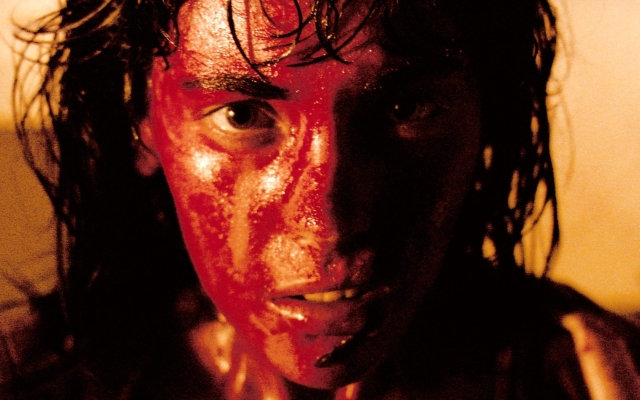 Source: AF Archive Trick 'r Treat (2007)
Source: AF Archive Trick 'r Treat (2007)
Watching Michael Dougherty's horror anthology is like diving into a basket full of juicy and sweet Halloween goodies: among other treats, the director offers a haunted lake, a twisty tale of a werewolf (with Anna Paquin in a Little Red Riding Hood costume) and a killer with a disgusting new way making lanterns.
The fall nostalgia for pumpkins everywhere that the film evokes is a very American nostalgia, but it's also a sensibility that will touch anyone who's ever enjoyed a certain type of lantern. domestic American slasher film (a striking example is “Halloween” by John Carpenter).
Plus, whether we're talking about V/H/S or 1965's Dr. Terror's House of Horror, there's something about the anthology film and the horror genre that works surprisingly well: sit back, relax, and let me tell you some scary ones stories according to tradition. this brings us back to people like Mr. James. Incredibly delicious.
Fog (2007)
Frank Darabont's gripping Stephen King adaptation The Fog (the director's The Shawshank Redemption and The Green Mile are also based on King's works) is remembered for its hugely devastating ending, which dared to go a little darker than the source material. But while the final twist may be the most unsettling part, the rest of the film, about a mysterious fog that descends over an American city, quickly followed by a host of terrifying monsters, isn't exactly warm and cheerful. Thomas Jane plays protagonist David, who barricades himself in a grocery store with his young son and a small group of survivors, but paranoia and religious mania soon prove to be as dangerous as the beasts outside.
Teeth (2007)
For anyone who ever read Barbara Creed's updated version of Freud's The Monstrous Feminine while at university, this offbeat comedy-horror is a wickedly ironic treat: a superb, literal 21st-century implementation of the vagina dentata myth with a dark sense of humour. and a nice, raw feminist subtext. (If you're not familiar with the term, it's essentially exactly what it sounds like: a vagina with sharp fangs, capable of biting and tearing any unwanted intruders.)
Virgin student Dawn (Jess Weixler) with She's horrified to discover she has the mutation… but after a series of encounters with a rapist, a boastful classmate and a lusty stepbrother, she begins to see the benefits.
Let the right one be. In (2008)
It spawned an American remake and a British production, but eight years later, the creepy power of Alfredson's eighties-set Swedish vampire tale (itself based on an equally creepy and equally powerful book by John Ajvide Lindqvist) remains intact. The story of 12-year-old outcast Oscar and his friendship with the vampire Eli, who was “long ago 12 years old,” manages to be both uncompromisingly brutal (the bloody pool scene is especially notable) and painfully tender. .
It's also a surprisingly hopeful film: a film in which very real horrors — Eli's bloodlust, frightening schoolyard bullying and subtle hints of child abuse and pedophilia — sit alongside a touching teenage love story, and an ending so incredibly uplifting that it almost impossible. so as not to cry while watching. The film's visuals also leave their mark: watch it late at night and you'll dream of dreary, nearly empty city playgrounds and white-white snow against a cold black sky.
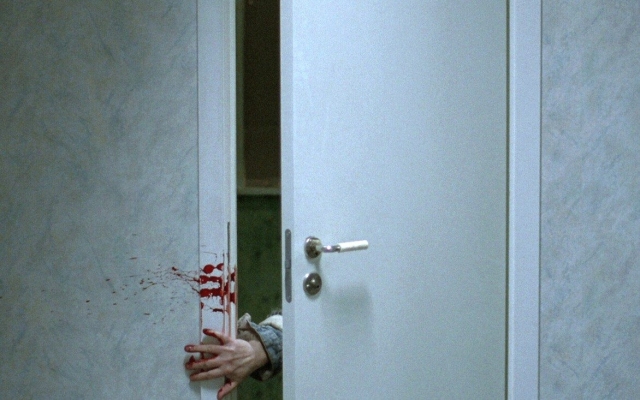 Let the faithful take credit: stills from the film «Martyrs» (2008)
Let the faithful take credit: stills from the film «Martyrs» (2008)
A favorite of hardcore horror fans, «Martyrs» is often called «porn» with torture”—and on a surface level, that’s exactly what it is. But the most terrifying thing about this dark French shocker is the way it subverts expectations, imbuing the torture scenes with a sense of vivid, heartbreaking pity and making viewers truly feel everything they see on screen.< /p>
Without giving too much away, it's also one of the most twisted horror films out there: it starts out as a dark and intense home invasion, with what appears to be a supernatural element (quickly revealed to be something else entirely), then takes a dramatic tonal shift. On the halfway. Try double-paying for Dreyer's silent classic Joan of Arc and you'll end up with a particularly dull (but oddly thematically and visually coherent) evening.
Drag Me to Hell (2009)
After ten years spent making Spider-Man, Raimi returned to the horror mainstream with this twisted fable of a gypsy curse that indecisive bank employee Alison Lohman brings upon herself when a bankrupt old woman (Lorna Raver) begs her for mercy. Taking cues from occult classics like Night of the Demon but cooked with Raimi's trademark unbridled enthusiasm, the film relentlessly drags its poor heroine to the brink of hell, revealing increasingly wild set pieces such as a talking session. a goat and a disgusting procedure with embalming fluid. For us, it's frightening hysteria in high black comic style, only Raimi does it well, while being gleefully disgusting and legitimately causing panic.
House of the Devil (2009)
Paying homage to a certain type of 'nanny in peril' eighties horror film, this meticulously crafted, gorgeously retro throwback from Ti West's 1983 film masterfully builds suspense — even when it seems like not much is going on. College student Samantha (Jocelyn Donahue) reluctantly agrees to take on an unusual-sounding babysitting job, and the film's best scenes find her alone, oblivious, trying to relax in a creepy mansion on the outskirts of town. However, we as viewers are in a slightly more privileged position: we can see the network slowly approaching.
I Saw the Devil (2010)
In Kim Ji-woon's frantic, gloriously bloody Korean revenge thriller, a man tracks down his fiancée's killer, sadistically pursuing the killer with a tracking device — and resorting to increasingly brutal acts in his quest for a very personal sight. justice. Energetic, fast-paced and always exciting, the film is filled with shocks and some pretty extreme, gasp-inducing gore, but is also imbued with a sense of darkness and real pathos. It's often gruesome, but never mindless—and that's what turns it from distractingly disgusting escapism into a more drawn-out meditation on revenge and violence.
Kill List (2011)
Terribly ambiguous with a cold disdain for traditional films. creating clichés (not to mention genre conventions), Kill List may seem like a confusing film on first viewing, but it is also undeniably a brilliant film.
Ben Wheatley's story of two battling hitmen under contract to commit four murders begins as a character-driven crime film, but events quickly take a strange and gruesome turn. The increasingly unsettling atmosphere is combined with a disturbingly illogical, at times almost dreamlike plot, punctuated by extreme violence and culminating in a truly shocking occult-themed ending.
Wheatley deliberately keeps the audience in the dark about what exactly is going on, but his two hitmen are even more ignorant, helping us share their growing unease. (What is this weird symbol? Why are the victims thanking them? What the hell is going on?) The result is one of the most genuinely interesting British films of the last decade.
 List of murders Berberian Sound Studio (2012)
List of murders Berberian Sound Studio (2012)
In this story about a British sound designer working on a seventies Suspiria-style Giallo thriller (at one point the film creatively and creepily uses vegetables as props for torture sound effects), Peter Strickland stylishly blurs the lines between cinema and reality. -life, features a compelling performance from star Toby Jones and hilariously reminds everyone that when it comes to creating fear, what we hear is often far more unsettling than what we see.
We are who we are (2013)
Set in rain-drenched upstate New York, Jorge Michel Grau's reimagining of the Mexican horror film of the same name is a claustrophobic coming-of-age story with a dash of cannibalism thrown in for good measure. It tells the story of the Parkers, a family led by an oppressive patriarch with a grim annual ritual that dates back to the days of their Pilgrim ancestors. Ambyr Childs and Julia Garner are incredibly compelling as daughters Iris and Rose, two pale blonde sisters whose frail appearance conceals their complicity in a bloody family secret.
It's a bit of a slow burn, but the cathartic final dinner table scene, which manages to be both horribly gory and wonderfully uplifting, is worth the wait. A rare horror film, this American remake also has the distinction of being both very different from the source material and a bit more powerful (though Grau's quirky film is certainly worth a watch).
The Evil Dead (2013)
Reboots of classic horror films often get a bad rap, but with The Evil Dead, Uruguayan director Fede Alvarez proved that taking risks can pay off. Instead of emulating the quirky humor of Sam Raimi's beloved supernatural franchise and adding a ton of CGI, the film unabashedly opts for old-school special effects-driven violence, resulting in one of the most bloodily creative horror films ever made. recent years. Despite a new cast and higher budget, it is spiritually in sync with its eighties predecessor.
A girl walks home alone at night (2014)
A girl walks home alone at night — but set aside all expectations: it's not the girl who should be afraid.
In Ana Lily Amirpour's stunningly beautiful black-and-white arthouse production, «Iran's first vampire western,» set in the imaginary town of Bad City and filmed like a gorgeous piece of French New Wave, the nighttime streets are populated by a dangerous, blood-drinking young woman. But her thirst is satisfied by compassion; she seems to feed only on those who deserve it, sparing sympathetic young suitor Arash (who pierces her ears in a beautifully tender encounter) and slowly drawing him into her world.
Stars Sheila Vand and Arash Marandi are equally charming and are as compelling as the film itself – and it even features a cat that is important to the narrative. What more could a discerning fan of Iranian vampire westerns want?
The Babadook (Jennifer Kent, 2014)
The great thing about The Babadook, the feature debut from Australian director Jennifer Kent, is that it's actually two films in one. On the most obvious level, this is an impressively frightening supernatural thriller about a sinister children's book character: the top-hatted, spindly-fingered Babadook, who can be seen lurking in every dark corner: a terrifying, shadowy creature always lingering at the edge of your vision and making your skin suddenly tingle with fear. when you are lulled into a false sense of security. But it is also a heartbreaking drama about a mother dealing with grief and mental illness after the death of her husband and trying to cope with her six-year-old son with behavioral problems.
The film's strength, of course, lies in the way these two strands flow seamlessly and skillfully together, as well as the outstanding performances by Essie Davis in the title role of Amelia and Noah Wiseman as her son Samuel. As The Telegraph's Tim Robie put it in his review: «To be able to scare an audience silly with original imagery and unconventional shocks is no mean feat at a time when the horror genre has become a largely self-plagiarized and cannibalistic phenomenon.» To be able to move us at the same time is almost a miracle.”
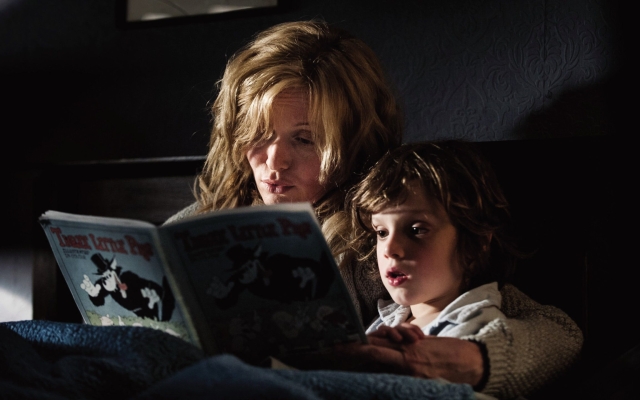 The Babadook Followed (2015)
The Babadook Followed (2015)
A dreamy, brooding and melancholy portrait of teenage life in the suburbs combined with… -a truly terrifying antagonist in David. The stunningly original, superbly directed film It Follows by Robert Mitchell: a horror film about a curse transmitted through sexual intercourse.
Anyone «infected» (and that word seems appropriate, given the obvious parallels with STDs) will find themselves being followed by a demonic entity that can take the form of any man or woman, marching steadily and relentlessly towards them. Maika Monroe (who cut her teeth in horror thrillers in Adam Wingard's The Guest ) is perfect as Jay, who falls victim to a curse due to an unscrupulous «boyfriend» and must decide how to shape her destiny… and who to pass on the curse to. In one chillingly explicit sequence, she approaches three young men on a boat, complete strangers; subsequent events and their subsequent fate are left to our imagination.
Good night, mommy (2015)
Two undeniably terrifying horror movie protagonists: the Hidden Face Men, whose disguised features suggest they could be anyone, and the Creepy Twins. This darkly engrossing Austrian film has both. An impressively disgusting exercise in suspense, it tells the story of brothers Lucas and Elias, who are convinced that the woman living in their house, wearing a bandage over her whole face after surgery and displaying alarmingly out-of-character behavior is out of character. a real mother in general. They try to confirm their suspicions — and as their mistrust grows, the film builds to a horrifying, sadistic ending.
The Witch (2016)
«If you want to know what it's like to have your stomach decide to do Ashtanga yoga, The Witch is the movie for you,» wrote the Telegraph's Robbie Collin in his five-star review of Robert Eggers' 17th-century horror film . He's absolutely right: Eggers' directorial debut is truly scary.
The Puritan era, dark dark wood edge is taken to the extreme, imbuing the film with a sense of crawling, fetid fear and psychologically transporting viewers to a more God-fearing era in which witchcraft was no joke, but a believable, always-near threat. Just in case absolute terror isn't enough, there's also a talking, possibly Satanic goat: the majestic, monstrous Black Philip.
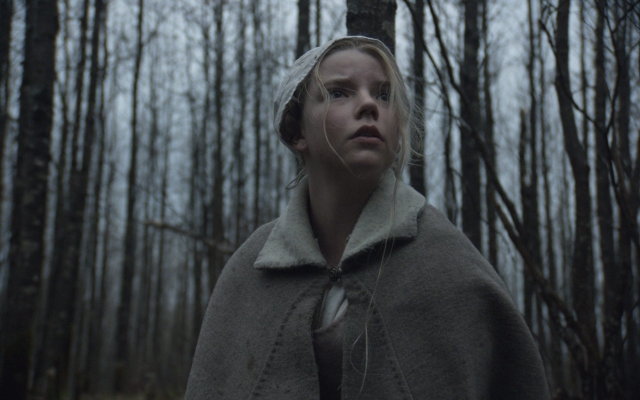 Anya Taylor-Joy in The Witch: “Handout Under the Shadow” (2016)
Anya Taylor-Joy in The Witch: “Handout Under the Shadow” (2016)
Some of The most difficult life events can be made vividly tangible through horror in the time it takes to suffocate.
The same goes for Babak Anvari's terrifying debut feature, in which a mother and daughter living under Sharia law in 1980s Tehran are haunted by smoky genies—evil spirits that float in their bedrooms like hijabs in the wind—so and the ticking threat of an unexploded rocket on the roof of their apartment building. Anvari and his standout actresses, Narges Rashidi and Avin Manshadi, evoke a persistent, meaningful fear that is not easily shaken.
Train to Busan (2016)
A successful and surprisingly poignant effort from director Yeon Sang-ho, this South Korean horror film follows a train journey interrupted by a hellish zombie outbreak on board, and is pretty much everything you could want in a zombie-on-a-train movie.
It's reminiscent of a very, very good episode of AMC's The Walking Dead (remember when The Walking Dead was good?) that easily but effectively evokes everything from terrorism to the ongoing refugee crisis and doesn't hold back on the stylish, gore-splattered . But like all great horror films, Train to Busan also makes you care about its characters and root for all the ordinary men, women and children caught up in the carnage.
The Neon Demon (2016)
Often surreal, delightfully shot and outlandish, pulsating over the edge, Nicolas Winding Refn's unsettling psychological horrors celebrate beauty, superficial attractiveness and narcissism — and then allow the superficial but seductive world he created to disintegrate into bloody rituals, cannibalism and murder. The film tells the story of an aspiring young model, played by Elle Fanning, and explores the jealousy—and, more appropriately, the hunger—that she provokes in others.
Cannibalism in cinema is often used as a metaphor for desire or as a demonstration of power and ownership. Here, however, these two images are combined in such a way that the film's nauseating ending seems, if not entirely natural, then at least quite plausible. Neon Demon doesn't stop at cannibalism: there's also necrophilia, which precedes and foreshadows a disturbing betrayal. The film is terrifying and blinding at the same time — and demonstrates its brutality with amazing talent ready for the runway.
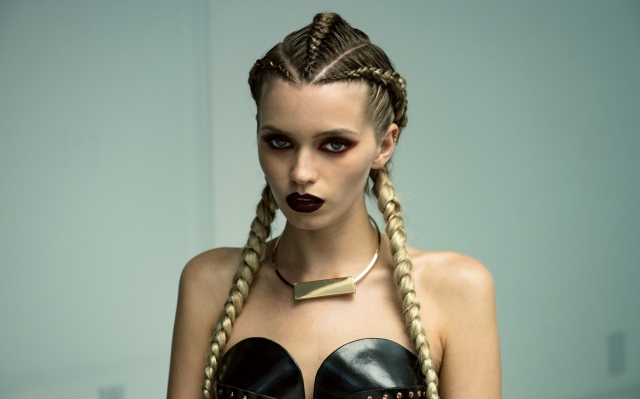 Neon Demon, better Beware (2016)
Neon Demon, better Beware (2016)
Chris Peckover's clever little Christmas horror boasts a stunningly stunning twist, right before the middle Mark, that changes the course of the entire film — and turns it from a creepy seasonal scare into a downright disturbing commentary on male entitlement and how certain behaviors are normalized by cinema and society in general.
It's very funny, incredibly tense, and best watched without knowing it ahead of time. It's the equivalent of taking a bite of a promising-looking mince pie only to find something mildly unpleasant inside, and then finding out (ha ha, just kidding!) that the mince pie was poisoned all along.
Raw (2017)
Raw, the feature debut from French director Julie Ducournau, is both a gruesome cannibal horror film and an evocative coming-of-age drama that pits the sexual awakening of young veterinary student Justine (a fantastic Garance Marillier) against the birth of her child. a more destructive type of hunger.
Erotic, chillingly sensual, and occasionally disgusting (one scene involving a finger reportedly made early preview viewers swoon), the film hits all the right notes, vacillating between playful irreverence and real emotion. But its true power — its stunning, relentless intensity — is that it forces you to vicariously enjoy both of Justine's growing hungers. You'll savor every sticky, forbidden bite, even if it leaves you a little queasy.
Get Out (2017) 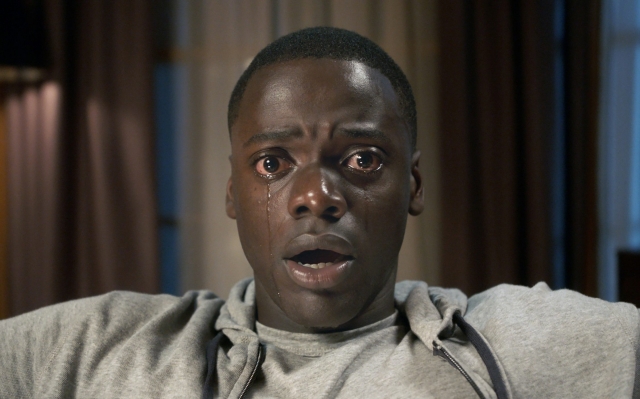 Daniel Kaluuya in Get Out
Daniel Kaluuya in Get Out
What genre could convey the dangerous contradictions of a world where racism is alive, how never, but where a lot of white people obsessively pretend they're not? The answer had to be horror—and Jordan Peele's first feature thrilled audiences with its sly but sharp humor and uncomfortably precise racial politics.
The film, which took a stab at the horror genre by claiming an Academy Award for Best Screenplay as well as a Best Picture nomination, tells the story of a young photographer who goes on a journey to meet his new girlfriend's parents. While there, he discovers that these bumbling, apparently well-meaning white liberals are not nearly as harmless as he initially assumes. As complex as it is, the film doesn't hold up when it comes to big horror or gore. But the full-blown violence, when it finally arrives, has a joyfully cathartic effect, and all the better for the slow, sustained buildup.
Meanwhile, concepts from the film — such as the disgusting «sunken place» — are already firmly in place entered the modern lexicon. People will be talking about Get Out and using Get Out to discuss vital issues for years to come.
IT (2017)
THIS is your greatest achievement? It reminds you of what it's like to be a scared child trapped in the worst of nightmares.
In Andy Muschietti's sensitive yet full-blown adaptation of Stephen King's novel, Andy Muschietti's film had the daunting task of bringing King's small-town horrors to a new generation and finding a Pennywise who could compete with the legendary Tim Curry, who starred in the up-and-coming film. loved the earlier adaptation (and the many nightmares that followed). Remarkably, the director succeeds on both counts: His It hits all the right notes of nostalgia while still remaining fresh, and in Bill Skarsgård's It, he offers a truly terrifying new take on an old favorite.
The opening storm drain scene is a horrifying short film in itself, while Muschietti's wise decision to center his film around the character of Beverly and her struggle with her abusive father imbues the story with a new, decidedly uplifting dimension. . Yes, modern horror's love affair with all things '80s may be starting to get a little tiresome, but when nostalgia is realized so perfectly, it's hard not to get carried away.
Hereditary (2018)
It has been described as the scariest film in recent memory recent years — and this time the hype is largely accurate. Ari Aster's stunningly chilling drama tells the story of the Graham family, besieged by a series of truly horrifying events and some increasingly disturbing supernatural events following the death of their secretive matriarch Ellen.
Toni Collette is Oscar-worthy as artist Annie, whose miniature dollhouses give the film some supremely creepy visuals, but Alex Wolff as son Peter is equally compelling as a young man descended into his deeply personal hell. Hereditary, although exciting and fast-paced, is a dark and heartbreaking film: it essentially invites you to watch a family fall apart, its helpless members gripped by unimaginable fear and grief, unable to escape their own fate.
However, for true horror fans — or those who want to be truly horrified — it is not to be missed.
A Quiet Place (2018)
In John Krasinski's sticky-palmed survival horror film, the slightest sound in a post-apocalyptic vision of humanity in hiding will send a scavenger alien straight to your door. These creatures, which we see only in alarming flashes in the first hour of screen time, have no other senses at their disposal — you can shine a spotlight in their faces, blow cigar smoke into their toothy maw, and no harm will happen. But drop a bottle of pills and they'll tear you to shreds.
The Abbott family, led by Lee Krasinski and Emily Blunt, his real-life wife as Evelyn, has learned to survive in silence largely because their eldest child, played by deaf actress Millicent Simmonds from Wonderstruck, has always been deaf. Moviegoers have been known to be too afraid of noise to munch on popcorn.
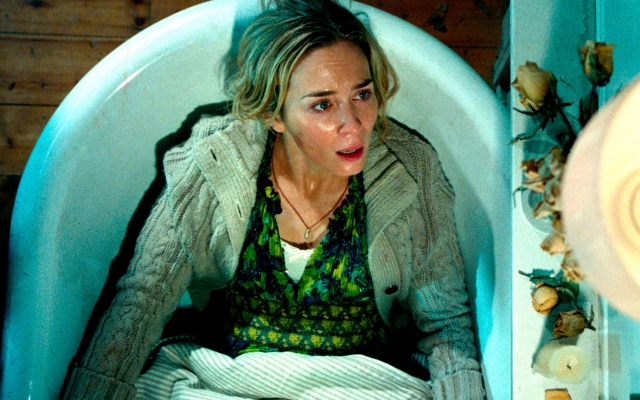 «A Quiet Place» Credits: Johnny Cournoyer «We » (2019)
«A Quiet Place» Credits: Johnny Cournoyer «We » (2019)
Jordan Peele's follow-up to Get Out is a twisting, jangling horror allegory that uses the raw power of this supposedly «low» genre to explode one of the fault lines running through 21st-century American life.< /p>
This parable about a middle-class black family coming face to face with their evil, snarling counterparts one night suggests that we all have a «shadow self» that seethes with it all — and that it's for the good of the whole country. that at the first opportunity we would strike them with a brass poker, a golf club, or the like. It's a master class in escalating terror, with its darkly comic asides, delectable imagery and sly cinephile hat tips that bring out the full flavor of fear like seasoning on a piece of meat.
The Sun (2019)
Ari Aster works his playful and evil magic again, just a year after his debut. The film takes place during a dazzling nine-day pagan festival in Sweden. Midsommar is a delightful romp of a film that is alternately heroically frustrating and hilarious.
Heartbroken college student Dani (Florence Pugh) ends up accompanying her leg-losing boyfriend Christian (Jack Reynor) and three of his pals on a summer vacation after repeated bereavement so terrible you can barely imagine surviving. The film's mischief often outweighs the scares, and you don't really mind: when they spar, it's doubly entertaining. Digital tricks subtly infect the images — flowers transform, faces melt — it's like a good-bad acid trip in a diabolical state of flow.
Midsommar Author: Csaba Aknei Saint-Maud (2019)
Featuring a standout performance from Welsh actor Morfydd Clark, this fear-filled, hallucinatory psychological horror will restore your faith in British cinema. In Rose Glass's chillingly accomplished debut, Clarke plays an aspiring nun tasked with caring for a new patient. Partially enchanted by her new charge, a slutty former dancer (Jennifer Ehle), Maud becomes convinced that her soul is in urgent need of saving. But from what?
Saint Maud is a film that should be approached with caution as well as the pure fervor of a cinephile, with poignant undertones from Lynne Ramsay, Roman Polanski and Lars von Trier. We see events entirely from Maude's unflinchingly devout point of view, and as the film descends into full-blown fire and brimstone psychosis, it conjures up some truly nightmarish and eerie imagery. It even makes Scarborough look a little otherworldly.
X (2022)
Insanely ripe and hugely self-aware, Ti West's riotous slasher film is, as one character puts it, «one hell of a fucking horror.» picture.”
The action takes place in the 1970s. The cast and crew of a porn production crew rock out on a remote Texas farm. They're hoping for a quiet location to film; Older killer owners have other plans. Yes, it gleefully leans on stalwarts like The Texas Chainsaw Massacre and The Hills Have Eyes in its quest; and yes, since this is an A24 production, the music and cinematography are painfully cool and successful.
But what elevates X is the wonderful double performance of Mia Goth, who plays Maxine, the naive ugly duckling of the crew, and Pearl, the terrifying old woman who haunts the manor. The box office success of the Pearl prequel, detailing her murderous origin story, immediately followed; and a sequel to MaXXXine is in development.
Evil Dead Rise (2023)
Of all the lessons horror has taught us, one of the most memorable is that it's usually a bad idea to open a book locked between your teeth. But if you missed this particular 101st episode, Sam Raimi's fifth installment in the franchise is a stunningly good review.
Positioned somewhere between a reboot and a sequel to Raimi's two classic films, Lee Cronin takes the story forward in intriguing ways while maintaining the scruffy, visceral pull of the originals. When three inquisitive children stumble upon a demonic book and three records, their curiosity opens a hotline to Hell.
If this sounds cliched, that's because it is, and proudly so. Cronin, a young Irish director, takes Raimi's winning formula to a completely new setting with bloody spectacle. To his credit, the results feel both familiar and brilliantly fresh. How to reboot.
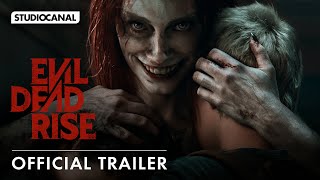 M3GAN (2023)
M3GAN (2023)
Heralded by the triumph of Gen Z-baiting and TikTok-friendly marketing, this entertaining slasher film from Blumhouse Productions is a bright breath of fresh air.
M3GAN stands for «Model 3 Generative Android»: think Chucky from Child's Play, but dressed in an immaculate trench coat and a shock of platinum blonde hair. And her killing spree — because of course that's what we're preparing for — is not caused by demonic possession, but by faulty programming. She's on constant alert to protect her teenage owner, a lonely girl named Cady (Violet McGraw) whose parents have just died in a car accident, and her targets include a neighbor's pit bull, its owner, a suspicious stranger… and, well. , from there it's open season.
By far the best Blumhouse fluff in a while, rest assured M3GAN will be back.
Talk to Me (2023)
This superb debut from Danny and Michael Philippou, the goofy twins from Adelaide who made their name with YouTube horror-comedies, has drawn comparisons to other modern classics such as Hereditary and It Follows. It may be a step below those titles, but it's an undeniably ominous and mind-bending ride.
The idea is simple: at booze-filled late-night parties, Australian teenagers take turns doing this — while tied to a chair, you clasp your embalmed hand and invite whoever materializes to occupy your body. Survive more than 90 seconds and you risk never returning.
But when a grieving Mia (the outstanding Sophie Wilde) breaks the rules of this ritual — all of which, of course, is broadcast live by a swarm of smartphones — things turn diabolical and extremely disgusting. Horror with verve and moral vision.
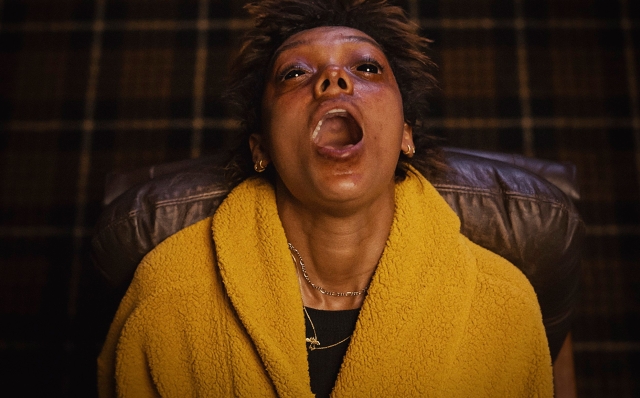 Sophie Wilde in Talk to Me Photo: A24 The 10 Scariest Horror Films all the time 10. Get out9. The Shining 8. The Descent 7. It Follows 6. A Nightmare on Elm Street5. The Witch 4. The Texas Chainsaw Massacre 3. Psycho 2. Jaws 1. The Exorcist
Sophie Wilde in Talk to Me Photo: A24 The 10 Scariest Horror Films all the time 10. Get out9. The Shining 8. The Descent 7. It Follows 6. A Nightmare on Elm Street5. The Witch 4. The Texas Chainsaw Massacre 3. Psycho 2. Jaws 1. The Exorcist




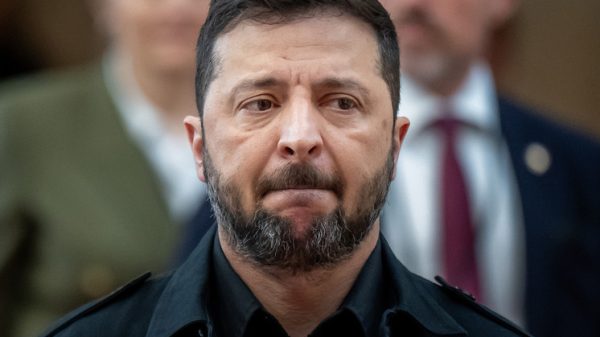






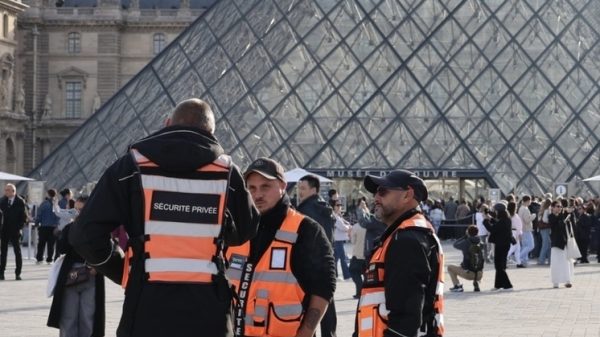



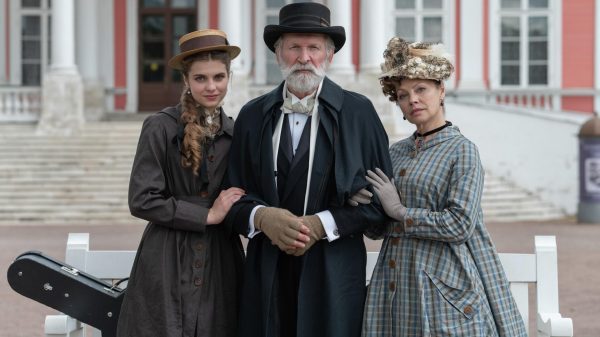








































Свежие комментарии